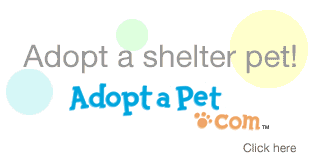Here's a great article for new dog owners.... Hope it helps you find your forever friend! –Kim
14 Worst Dog Breeds for New Pet Owners
We asked 218 veterinary professionals to vote on the dog breeds and mixes that are not good choices for first-time pet parents. German Shepherds, Bulldogs and Akitas are among the breeds of which new pet owners should steer clear.
No. 1: Akita
The Akita was bred to hunt big game such as bear, boar and elk. He can also weigh upwards of 115 pounds (or even more), and requires a 20-30 minute walk every day, always on leash due to a strong prey drive. He's a beautiful dog, but sheds heavily and can be a challenge to train, making him best suited to experienced dog owners.
No. 2: Chow Chow
Not known for being particularly lovey-dovey, the Chow Chow isn't the teddy bear he appears to be. He's intelligent but stubborn, and may require a lot of training before you get the results for which you're looking. This breed is wary of strangers and may be aggressive toward dogs he doesn't know.
No. 3: Chinese Shar-Pei
The Chinese Shar-Pei requires an assertive, experienced owner to train him and keep him from getting bored. This highly territorial dog tends to bond with one person, and can be quite distrustful of those he doesn't know – humans and canines alike. And all those dramatic skin folds can increase the tendency for chronic skin and eye conditions that a naïve pet owner may find daunting.
No. 4: Alaskan Malamute
He's friendly, joyful and exuberant, which may make him attractive to someone seeking a first dog, but be warned: The Alaskan Malamute sheds like crazy, pulls on leash with all of his 65-100 pounds and is a talented escape artist. This breed is made to travel far on his own four feet and he needs a family committed to a lot of exercise when it's best for him. That thick fur coat also leaves him vulnerable to heat injury.
No. 5: Rottweiler
Although he can be a gentle giant, the wrong Rottweiler with the wrong owner can truly be a scary dog. A Rottweiler wants someone to be the boss, and if you're not taking the job, he will. He's powerful and protective, and known for being extremely loyal when it comes to his people and his property. Considering he can weigh as much as 135 pounds (and most of it muscle), he can generally back up his threatening growl.
No. 6: Weimaraner
The "Gray Ghost" earned his nickname for his beautiful gray coat and habit of following his owner closely, but the highly intelligent Weimaraner isn't the right dog for everyone. He's extremely energetic with no "off" switch, and he's not happy being left alone – separation anxiety can be a real issue with this breed. He can be difficult to housetrain and a hazard to cats and other small pets, but if you plan to spend many days hunting, hiking or doing obedience and agility with him by your side, you might have found your perfect companion.
No. 7: Dalmatian
The spotted Dalmatian isn't just a Disney darling – he was bred to work as a coach dog, running alongside carriages or horses, alerting coachmen to approaching highwaymen and warding off stray dogs. That's how he became the traditional firehouse dog – he kept the streets clear for horse-drawn fire engines. However, the traits that made him perfect for this work can make him a challenge in the home. He has an endless capacity for exercise and can be destructive when bored. Also, he's a notorious shedder with stiff fur that weaves its way into fabric (but not out).
No. 8: Australian Cattle Dog
Sometimes known as a Blue Heeler or Australian Heeler, the Australian Cattle Dog is a medium-sized dog with serious endurance. Originally made up of several breeds, including the Collie, Dingo, Bull Terrier, Dalmatian and Black and Tan Kelpie, he has a reputation for being stubborn and having energy to spare – not to mention a truly adventurous spirit and belief in his own invincibility that will leave you wondering how he'll injure himself next.
No. 9: German Shepherd
Highly intelligent and a natural protector, the German Shepherd Dog is well-suited to a wide variety of jobs: He's worked as a guide dog, a drug sniffer, and, of course, a police and military dog. There's little he can't do with the right training, but that's exactly why he's not ideal for newbies – it takes quite a bit of training, exercise and dedication to stay "smarter" than he is. And all those smarts come with higher-than-average tendencies toward some pretty serious health problems, including hip dysplasia and neurologic issues.
No. 10: Saint Bernard
The Saint Bernard is incredibly lovable, but this gentle giant is also a lot of work. He drools (and drools and drools) and is known to ingest items like socks and dishtowels. Because of his enormous size (130-180 pounds or more), you might think he'd like to hang out in your big backyard, but you'd be wrong – he's prone to heatstroke and loves being around his people, so he's very much an indoor dog.
No. 11: Siberian Husky
The happy and affectionate Siberian Husky is a working dog that thrives in cold, snowy climates. He was bred to pull sleds over long distances, and his liveliness reflects that – a short walk around the block won't do for this breed. He sheds heavily, is a capable escape artist and has a strong predatory drive, so he's not a great choice for homes with cats or small pets.
No. 12: Bulldog
The Bulldog is generally good-natured and his goofy, wrinkled mug certainly makes him lovable, but the breed's heavy build and flat face make him particularly sensitive to heat, exercise and stress. He can't swim, so if you have a pool, pond or spa, his access should be restricted. He is prone to a variety of health issues and some may say he's challenging to train, but his fans don't mind – his entertaining antics and laid-back attitude make up for it in the right home.
No. 13: Bullmastiff
Devoted and protective to the point that he'd lay down his life for his family, the Bullmastiff has a mind of his own – and considering that he weighs in at 100-130 pounds, he can easily overwhelm an owner who isn't ready to stand up to him. He needs good, consistent, positive training and firm boundaries from a young age. He also needs someone to follow him with a mop, because this dog can drool. His high prey drive means he should always be kept on leash, and he doesn't generally love other dogs, so he's best as an only pet.
No. 14: Airedale Terrier
The Airedale Terrier is quite a character. Independent, intelligent and stubborn, he'll keep you laughing – and on your toes, as he's a notorious digger and counter-surfer. He'll bring the same exuberance and joy to playing games as he brings to excavating your garden and eating your drywall. He's not great with other dogs or animals and needs plenty of stimulation (both physical and mental). It should be noted, too, that this "King of the Terriers" was the inspiration for Margaret Marshall Saunders' novel Beautiful Joe, the story of an abused dog, which sparked the creation of the modern humane movement.
Source: MSN Living |
| Akita |
The Akita was bred to hunt big game such as bear, boar and elk. He can also weigh upwards of 115 pounds (or even more), and requires a 20-30 minute walk every day, always on leash due to a strong prey drive. He's a beautiful dog, but sheds heavily and can be a challenge to train, making him best suited to experienced dog owners.
No. 2: Chow Chow
Not known for being particularly lovey-dovey, the Chow Chow isn't the teddy bear he appears to be. He's intelligent but stubborn, and may require a lot of training before you get the results for which you're looking. This breed is wary of strangers and may be aggressive toward dogs he doesn't know.
No. 3: Chinese Shar-Pei
The Chinese Shar-Pei requires an assertive, experienced owner to train him and keep him from getting bored. This highly territorial dog tends to bond with one person, and can be quite distrustful of those he doesn't know – humans and canines alike. And all those dramatic skin folds can increase the tendency for chronic skin and eye conditions that a naïve pet owner may find daunting.
 |
| Alaskan Malamute |
He's friendly, joyful and exuberant, which may make him attractive to someone seeking a first dog, but be warned: The Alaskan Malamute sheds like crazy, pulls on leash with all of his 65-100 pounds and is a talented escape artist. This breed is made to travel far on his own four feet and he needs a family committed to a lot of exercise when it's best for him. That thick fur coat also leaves him vulnerable to heat injury.
No. 5: Rottweiler
Although he can be a gentle giant, the wrong Rottweiler with the wrong owner can truly be a scary dog. A Rottweiler wants someone to be the boss, and if you're not taking the job, he will. He's powerful and protective, and known for being extremely loyal when it comes to his people and his property. Considering he can weigh as much as 135 pounds (and most of it muscle), he can generally back up his threatening growl.
No. 6: Weimaraner
The "Gray Ghost" earned his nickname for his beautiful gray coat and habit of following his owner closely, but the highly intelligent Weimaraner isn't the right dog for everyone. He's extremely energetic with no "off" switch, and he's not happy being left alone – separation anxiety can be a real issue with this breed. He can be difficult to housetrain and a hazard to cats and other small pets, but if you plan to spend many days hunting, hiking or doing obedience and agility with him by your side, you might have found your perfect companion.
 |
| Dalmatian |
The spotted Dalmatian isn't just a Disney darling – he was bred to work as a coach dog, running alongside carriages or horses, alerting coachmen to approaching highwaymen and warding off stray dogs. That's how he became the traditional firehouse dog – he kept the streets clear for horse-drawn fire engines. However, the traits that made him perfect for this work can make him a challenge in the home. He has an endless capacity for exercise and can be destructive when bored. Also, he's a notorious shedder with stiff fur that weaves its way into fabric (but not out).
No. 8: Australian Cattle Dog
Sometimes known as a Blue Heeler or Australian Heeler, the Australian Cattle Dog is a medium-sized dog with serious endurance. Originally made up of several breeds, including the Collie, Dingo, Bull Terrier, Dalmatian and Black and Tan Kelpie, he has a reputation for being stubborn and having energy to spare – not to mention a truly adventurous spirit and belief in his own invincibility that will leave you wondering how he'll injure himself next.
No. 9: German Shepherd
Highly intelligent and a natural protector, the German Shepherd Dog is well-suited to a wide variety of jobs: He's worked as a guide dog, a drug sniffer, and, of course, a police and military dog. There's little he can't do with the right training, but that's exactly why he's not ideal for newbies – it takes quite a bit of training, exercise and dedication to stay "smarter" than he is. And all those smarts come with higher-than-average tendencies toward some pretty serious health problems, including hip dysplasia and neurologic issues.
No. 10: Saint Bernard
The Saint Bernard is incredibly lovable, but this gentle giant is also a lot of work. He drools (and drools and drools) and is known to ingest items like socks and dishtowels. Because of his enormous size (130-180 pounds or more), you might think he'd like to hang out in your big backyard, but you'd be wrong – he's prone to heatstroke and loves being around his people, so he's very much an indoor dog.
 |
| Siberian Husky |
The happy and affectionate Siberian Husky is a working dog that thrives in cold, snowy climates. He was bred to pull sleds over long distances, and his liveliness reflects that – a short walk around the block won't do for this breed. He sheds heavily, is a capable escape artist and has a strong predatory drive, so he's not a great choice for homes with cats or small pets.
No. 12: Bulldog
The Bulldog is generally good-natured and his goofy, wrinkled mug certainly makes him lovable, but the breed's heavy build and flat face make him particularly sensitive to heat, exercise and stress. He can't swim, so if you have a pool, pond or spa, his access should be restricted. He is prone to a variety of health issues and some may say he's challenging to train, but his fans don't mind – his entertaining antics and laid-back attitude make up for it in the right home.
No. 13: Bullmastiff
Devoted and protective to the point that he'd lay down his life for his family, the Bullmastiff has a mind of his own – and considering that he weighs in at 100-130 pounds, he can easily overwhelm an owner who isn't ready to stand up to him. He needs good, consistent, positive training and firm boundaries from a young age. He also needs someone to follow him with a mop, because this dog can drool. His high prey drive means he should always be kept on leash, and he doesn't generally love other dogs, so he's best as an only pet.
 |
| Airedale Terrier |
The Airedale Terrier is quite a character. Independent, intelligent and stubborn, he'll keep you laughing – and on your toes, as he's a notorious digger and counter-surfer. He'll bring the same exuberance and joy to playing games as he brings to excavating your garden and eating your drywall. He's not great with other dogs or animals and needs plenty of stimulation (both physical and mental). It should be noted, too, that this "King of the Terriers" was the inspiration for Margaret Marshall Saunders' novel Beautiful Joe, the story of an abused dog, which sparked the creation of the modern humane movement.
© 2014 MSN/Microsoft
Also, see:
- Are You Ready for a Dog in Your Life?
- How to Prepare for a Puppy
- Basic Breed Information - 1
- Basic Breed Information - 2
- Basic Breed Information - 3
- Basic Breed Information - 4
- Basic Breed Information - 5
- Basic Breed Information - 6
- Basic Breed Information - 7
- Basic Breed Information - 8
- Basic Breed Information - 9
- Basic Breed Information - 10
- Basic Breed Training Information
This entry was posted
on Saturday, August 30, 2014
at Saturday, August 30, 2014
and is filed under
adoption,
aggression,
Akita,
Aussie,
Australian Shepherd,
breeds,
Bulldog,
Chow Chow,
Dalmation,
Dogs,
German Shepherd,
Rottweiler,
Shar Pei,
Top Dog Blog,
training,
Weimaraner
. You can follow any responses to this entry through the
comments feed
.




































